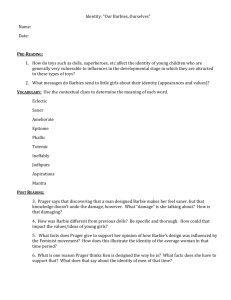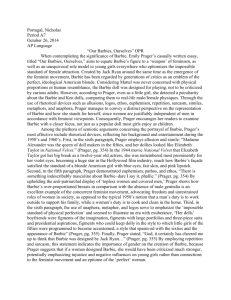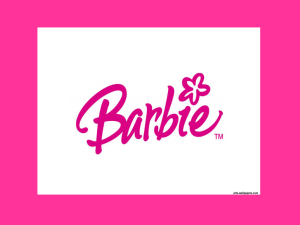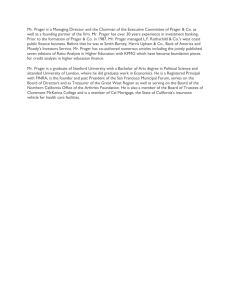Rackstraw Brilliant AP Language Student Ms. Rackstraw AP
advertisement
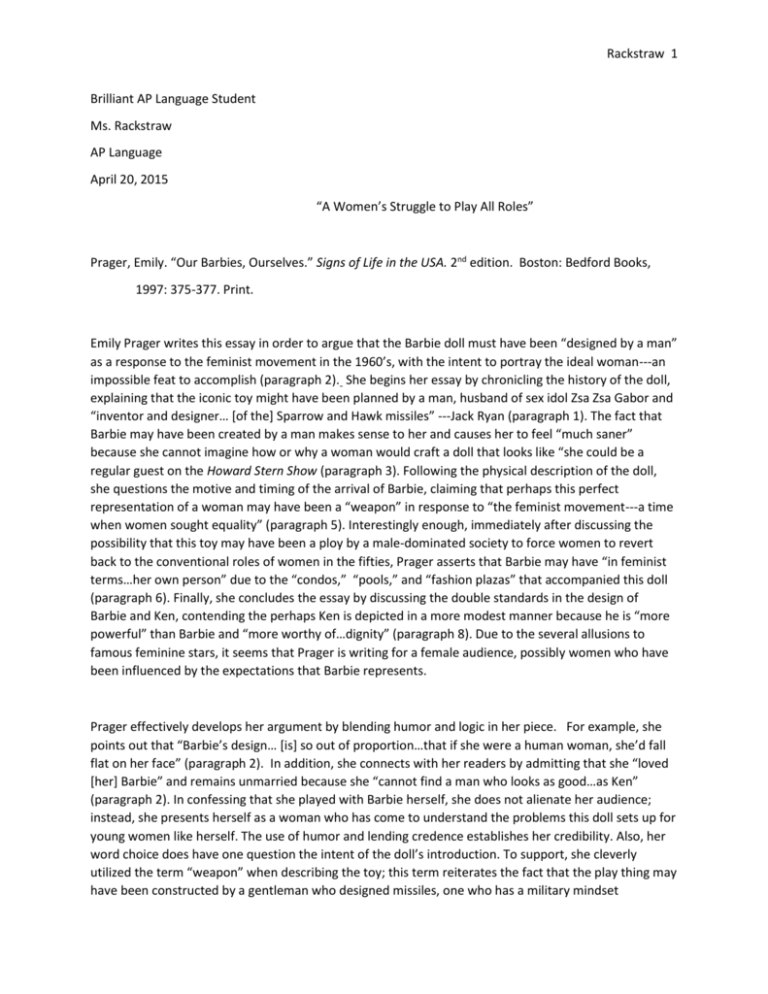
Rackstraw 1 Brilliant AP Language Student Ms. Rackstraw AP Language April 20, 2015 “A Women’s Struggle to Play All Roles” Prager, Emily. “Our Barbies, Ourselves.” Signs of Life in the USA. 2nd edition. Boston: Bedford Books, 1997: 375-377. Print. Emily Prager writes this essay in order to argue that the Barbie doll must have been “designed by a man” as a response to the feminist movement in the 1960’s, with the intent to portray the ideal woman---an impossible feat to accomplish (paragraph 2). She begins her essay by chronicling the history of the doll, explaining that the iconic toy might have been planned by a man, husband of sex idol Zsa Zsa Gabor and “inventor and designer… [of the] Sparrow and Hawk missiles” ---Jack Ryan (paragraph 1). The fact that Barbie may have been created by a man makes sense to her and causes her to feel “much saner” because she cannot imagine how or why a woman would craft a doll that looks like “she could be a regular guest on the Howard Stern Show (paragraph 3). Following the physical description of the doll, she questions the motive and timing of the arrival of Barbie, claiming that perhaps this perfect representation of a woman may have been a “weapon” in response to “the feminist movement---a time when women sought equality” (paragraph 5). Interestingly enough, immediately after discussing the possibility that this toy may have been a ploy by a male-dominated society to force women to revert back to the conventional roles of women in the fifties, Prager asserts that Barbie may have “in feminist terms…her own person” due to the “condos,” “pools,” and “fashion plazas” that accompanied this doll (paragraph 6). Finally, she concludes the essay by discussing the double standards in the design of Barbie and Ken, contending the perhaps Ken is depicted in a more modest manner because he is “more powerful” than Barbie and “more worthy of…dignity” (paragraph 8). Due to the several allusions to famous feminine stars, it seems that Prager is writing for a female audience, possibly women who have been influenced by the expectations that Barbie represents. Prager effectively develops her argument by blending humor and logic in her piece. For example, she points out that “Barbie’s design… [is] so out of proportion…that if she were a human woman, she’d fall flat on her face” (paragraph 2). In addition, she connects with her readers by admitting that she “loved [her] Barbie” and remains unmarried because she “cannot find a man who looks as good…as Ken” (paragraph 2). In confessing that she played with Barbie herself, she does not alienate her audience; instead, she presents herself as a woman who has come to understand the problems this doll sets up for young women like herself. The use of humor and lending credence establishes her credibility. Also, her word choice does have one question the intent of the doll’s introduction. To support, she cleverly utilized the term “weapon” when describing the toy; this term reiterates the fact that the play thing may have been constructed by a gentleman who designed missiles, one who has a military mindset Rackstraw 2 (paragraph 5). Moreover, her most effective evidence is when she lays out the timeline of the doll, during the 1960’s when the roles of women were just beginning to change. It does not seem like a coincidence that Barbie arrived on the shelves when feminism was considered “king” (paragraph 5). In addition, her observation that Ken’s body does not have the same candid bare portrayal as Barbie is also quite convincing. Comparatively, Betty Rollin’s article “Motherhood: Who Needs It” also questions the traditional portrayal and roles of women. Her article was written at the peak of the feminist movement, the 1970’s and her audience similarly is geared towards female readers who may have been caught in the traditional societal expectation that women are meant to be the nurturers and caretakers of the family first and foremost. Her article has a different tone: a more stern and direct one. She, unlike Prager, uses a great deal of logos, naming many psychological and sociological studies as evidence that duty of motherhood is a myth. Rollins does not use the humor that Prager does; contrarily, she develops her argument in a very detached manner. This approach may be due to the time period, when women were out in the streets marching for the passing of ERA; whereas, Prager wrote her essay in the late twentieth century when we already had female CEO’s and a female vice-president candidate. Since Prager’s essay is more of a horation satire and Rollin’s is more juvenalian, I believe that Prager is more effective in making her argument. However, the purpose of both women may be slightly different: Prager is causing women to reflect and question, while Rollins is inciting change. Prager’s essay is very important because many young ladies seek the physical perfection that can only be achieved with plastic and chemicals. Ironically, though perhaps women are now using plastic surgery and chemicals such as Botox to try and become the real live version of Barbie. This issue of unrealistic societal expectations and double standard of how women are viewed versus men is also important because it causes low self-esteem and objectifies women. We see this in many other forms of media such as movies, commercials and music videos. How many of these venues portray women as sex objects, used to “sell” products. If women buy into these ideas, many negative ramifications can occur, holding women from true progress and value. Women could possibly accept being treated less than what they are really worth. Also, men may not value women as much as they should, viewing them as a tool used to achieve a selfish purpose rather than an equal partner. Perhaps this essay will bring to light the need to focus on the mind and character of women.
